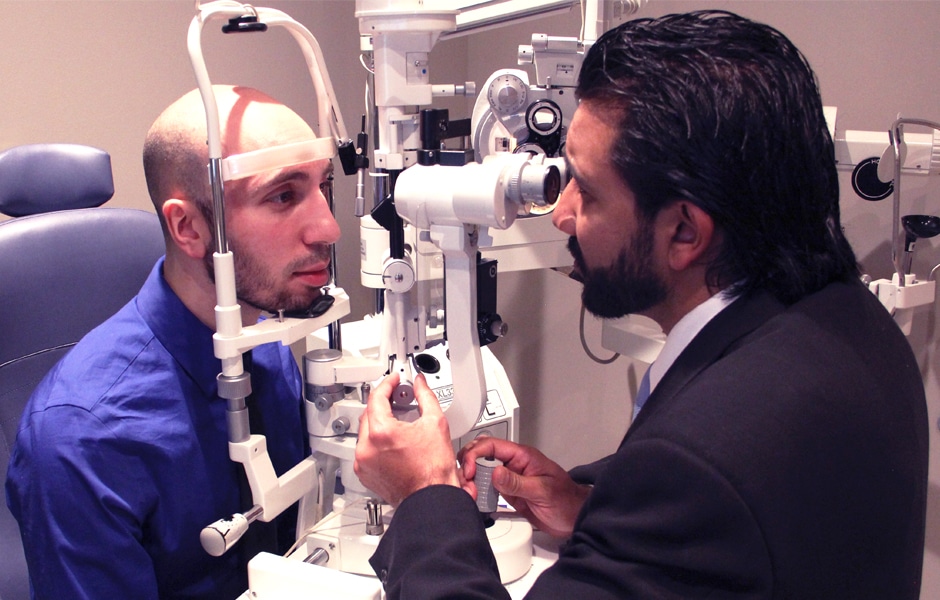Eye Center Andalusia: State-of-the-Art Look After All Ages
Eye Center Andalusia: State-of-the-Art Look After All Ages
Blog Article
Understanding the Different Vision Correction Procedures Available for Clearer Sight
In the world of vision improvement treatments, a multitude of options exist to resolve refractive mistakes and give people with more clear view. Let's discover the intricacies of these treatments and lost light on the course to achieving boosted vision clarity (Eye Doctors in Andalusia).
LASIK Surgery
LASIK surgical procedure is a typical refractive procedure made use of to correct vision problems such as astigmatism, farsightedness, and nearsightedness. This medical technique, which stands for Laser-Assisted in Situ Keratomileusis, aims to reshape the cornea to improve just how light is focused on the retina, inevitably improving vision clarity.
Among the key benefits of LASIK surgical treatment is the rapid enhancement in vision experienced by clients. Numerous individuals notice a considerable enhancement in their eyesight right away after the procedure. Furthermore, the majority of clients report minimal pain and discomfort throughout the surgery and healing period. The recovery time for LASIK is relatively fast, with numerous individuals returning to their daily tasks within a day or 2 post-operation. In general, LASIK surgical procedure is a popular selection for people looking for a long-lasting service for their vision issues.
PRK Procedure

PRK is an appropriate option for individuals with slim corneas or those at a higher risk of eye injuries, as it does not include developing a corneal flap. The recovery procedure for PRK is slightly longer compared to LASIK, as the epithelium requires time to regrow. Clients might experience discomfort and fuzzy vision for a couple of days adhering to the treatment.
In spite of the longer recovery time, PRK can yield exceptional results in vision renovation, making it a beneficial alternative for those that might not be ideal prospects for LASIK surgical procedure. - Eye Center Andalusia
Implantable Lenses
Unlike PRK where the cornea is improved directly, implantable lenses use one more method for remedying vision by inserting fabricated lenses inside the eye. This treatment is especially useful for people with high levels of farsightedness, nearsightedness, or astigmatism who may not be suitable prospects for laser surgeries like LASIK or PRK.
Implantable lenses, also referred to as phakic intraocular lenses, job by supplementing the eye's natural lens with an artificial one. These lenses can be positioned before the all-natural lens (anterior chamber) or behind the iris and in front of the natural lens (posterior chamber) By adjusting the power and positioning of these lenses, ophthalmologists can successfully deal with refractive mistakes and boost aesthetic acuity.
One benefit of implantable lenses is that they are exchangeable and detachable, offering adaptability for future modifications. However, similar to any type of surgery, there are risks entailed, such as infection or cataract formation. Patients taking into consideration implantable lenses need to talk to an eye treatment professional to figure out one of the most ideal option based on their private demands and eye health.
Corneal Rings

The procedure for putting corneal rings is minimally intrusive and reasonably quick, frequently executed as an outpatient treatment. During the surgery, the ophthalmologist makes a tiny incision in the cornea and inserts the rings at a certain depth. When in position, the rings assist to improve the cornea, supplying a smoother surface for light index to go over here into the eye, which can cause clearer vision.
Corneal rings are considered a relatively easy to fix procedure, as they can be eliminated or changed if essential. While they may not completely eliminate the demand for glasses or call lenses, corneal rings can significantly improve vision high quality and general visual convenience for people with keratoconus or various other corneal irregularities.
Refractive Lens Exchange
Adhering to the improvement of corneal irregularities with procedures like corneal rings, an additional vision improvement technique that can resolve refractive mistakes is Refractive Lens Exchange (RLE) RLE is an operation that involves replacing the eye's natural lens with a synthetic intraocular lens (IOL) to remedy refractive mistakes such as farsightedness, nearsightedness, and presbyopia. This treatment is especially valuable for people who might not be appropriate candidates for treatments like LASIK or PRK because of factors such as slim corneas or high refractive errors.
RLE is comparable to cataract surgical procedure, as both involve getting rid of the eye's all-natural lens; nonetheless, in RLE, the lens is clear, not gloomy as in cataracts. The man-made lens implanted throughout RLE can be customized to resolve the person's specific refractive error, offering clear vision at numerous distances. Recovery time for RLE is fairly fast, and check my site patients can expect better vision quickly after the treatment. Just like any surgery, prospective threats and difficulties exist, so a complete assessment with an eye care specialist is necessary to establish if RLE is the appropriate vision modification option.
Conclusion

In the world of vision correction treatments, a wide variety of alternatives exist to address refractive errors and give individuals with more clear sight.LASIK surgical procedure is an usual refractive procedure utilized to deal with vision issues such as nearsightedness, farsightedness, and astigmatism.While also an usual refractive treatment, the PRK (Photorefractive Keratectomy) technique varies from LASIK surgery in its approach to correcting vision issues.Following the improvement of corneal irregularities with procedures like corneal rings, another vision correction strategy that can deal with refractive errors is Refractive Lens Exchange (RLE) LASIK surgery, PRK treatment, implantable lenses, corneal rings, and refractive lens exchange are all alternatives that can resolve different vision problems.
Report this page